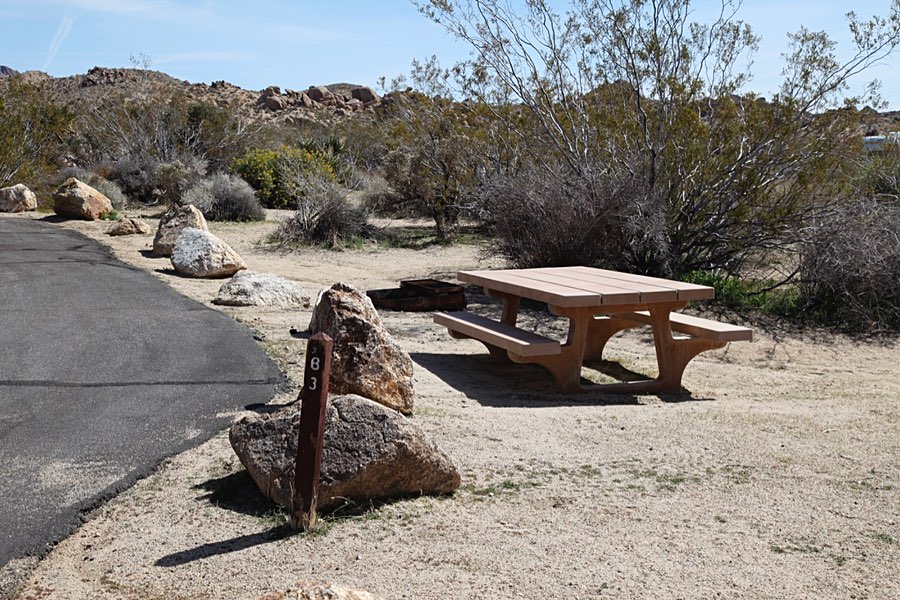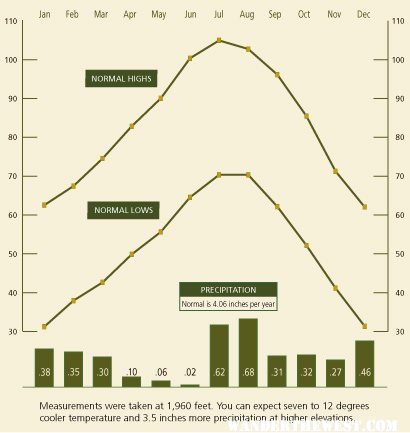Joshua Tree National Park lies 140 miles east of Los Angeles, 175 miles northeast of San Diego, and 215 miles southwest of Las Vegas. You can approach it from Interstate 10 and Hwy 62 (Twentynine Palms Highway). The closest airport is in Palm Springs. Public transportation to the park is not available. There are three park entrance stations:
The west entrance is located five miles south of the junction of Highway 62 and Park Boulevard at Joshua Tree Village.
The north entrance is in Twentynine Palms, three miles south of the junction of Highway 62 and Utah Trail.
The south entrance at Cottonwood Spring, which lies 25 miles east of Indio, can be approached from the east or west, also via Interstate 10.

Choosing an Entrance
If you are coming from the North or West, I would recommend using the west entrance at Joshua Tree Village. This entrance has the most scenic drive into the park and is the closest to most of the park attractions.
Weather and Climate
Days are typically clear with less than 25 precent humidity. Temperatures are most comfortable in the spring and fall, with an average high/low of 85 and 50°F (29 and 10°C) respectively. Winter brings cooler days, around 60°F (15°C), and freezing nights. It occasionally snows at higher elevations. Summers are hot, over 100°F (38°C) during the day and not cooling much below 75°F (24°C) until the early hours of the morning.

Choosing a Campground
A general note about national park campgrounds: don’t show up on a weekend during high season and expect to find a campsite. Everything will likely be full. There are two things you can do to dramatically increase your chances of getting a good campsite (or any at all) in a busy national park: make a reservation or show up on a weekday or early Friday to secure your spot.
Since reservations are usually only accepted at the larger, more busy campgrounds, if you want to get a great spot at one of the smaller, quieter campgrounds, attempt to show up on a weekday and make the securing of your campsite your first order of business at the park.
I was able to get a great spot at White Tank (a campground with only 15 spaces) and keep it all weekend because I showed up on Thursday. I can’t tell you how many poor saps drove through that campground on the weekend searching in vain for an open site. I was able to visit all the campgrounds except for Black Rock and will rate them here.
Note that Black Rock is not in the main part of the park and does not have direct access to most park attractions so omitting it from this list shouldn’t matter to most folks. For the kind of Wanderers that frequent this site – this is how I would order my campground recommendations (note that I have a very compact camper so my recommendations are best for tent campers or those with small campers or vans. If you have a larger camper or RV you will want to choose an appropriate campground for your size rig):
1. White Tank Campground
2. Belle Campground
3. Ryan Campground
4. Hidden Valley Campground
5. Jumbo Rocks Campground
6. Indian Cove Campground
7. Cottonwood Campground
Some notes on these campgrounds: Hidden Valley is a very nice campground and if you are a climber this is the place to stay as many of the climbing routes literally start within the campsites. Ryan is also a great location for climbers. However, if you are not a climber, these campgrounds might be too busy for you as climbers tend to pile into the campsites in large numbers and there is a lot of activity going on all the time.
White tank has the most private and quite spots and is perfect for tent campers or small camper owners as large campers won’t fit into most of the spots in this campground. Belle is also in a quiet spot but has room for larger campers and trailers. Jumbo rocks is a larger, busier campground but is still really neat and tucked within the rocks.
Indian Cove is a nice campground but is not in the main part of the park making travel to the park attractions much longer. Finally, Cottonwood, while certainly not a bad campground, is the least scenic and is at the extreme south end of the park making travel to attractions longer than from other campgrounds.
What to do when you get there?
Joshua tree is a great place to hike. The park is full of short nature walks a fraction of a mile to epic trails up to tens of miles long. I was only there for a few days so here’s my short list based on my experience.
Lost Palms Oasis Trail – A tough 7.5 mile round trip hike – but the scenery is amazing and this was my favorite hike in the park. Lost Palms Oasis trail is at the south end of the park. The drive back into the main part of the park on Pinto Basin Road is long and somewhat desolate but the road has a long and steady grade to it and as you gradually gain altitude you are treated to some amazing transitions in desert vegetation including the Ocotillo Patch and the wonderful Cholla Cactus Garden, making the drive a worthwhile trip.
Keys Ranch is a historic ranch tucked into a sheltered basin with the park and is only accessible by NPS tour. I enjoyed the tour very much and highly recommend it as part of your Joshua Tree visit. The drive to Keys View goes through some of the densest stands of Joshua Trees in the park and Keys View itself is a must see.
That’s all I have for now – I hope this guide helps you plan a successful trip to Joshua Tree National Park!
